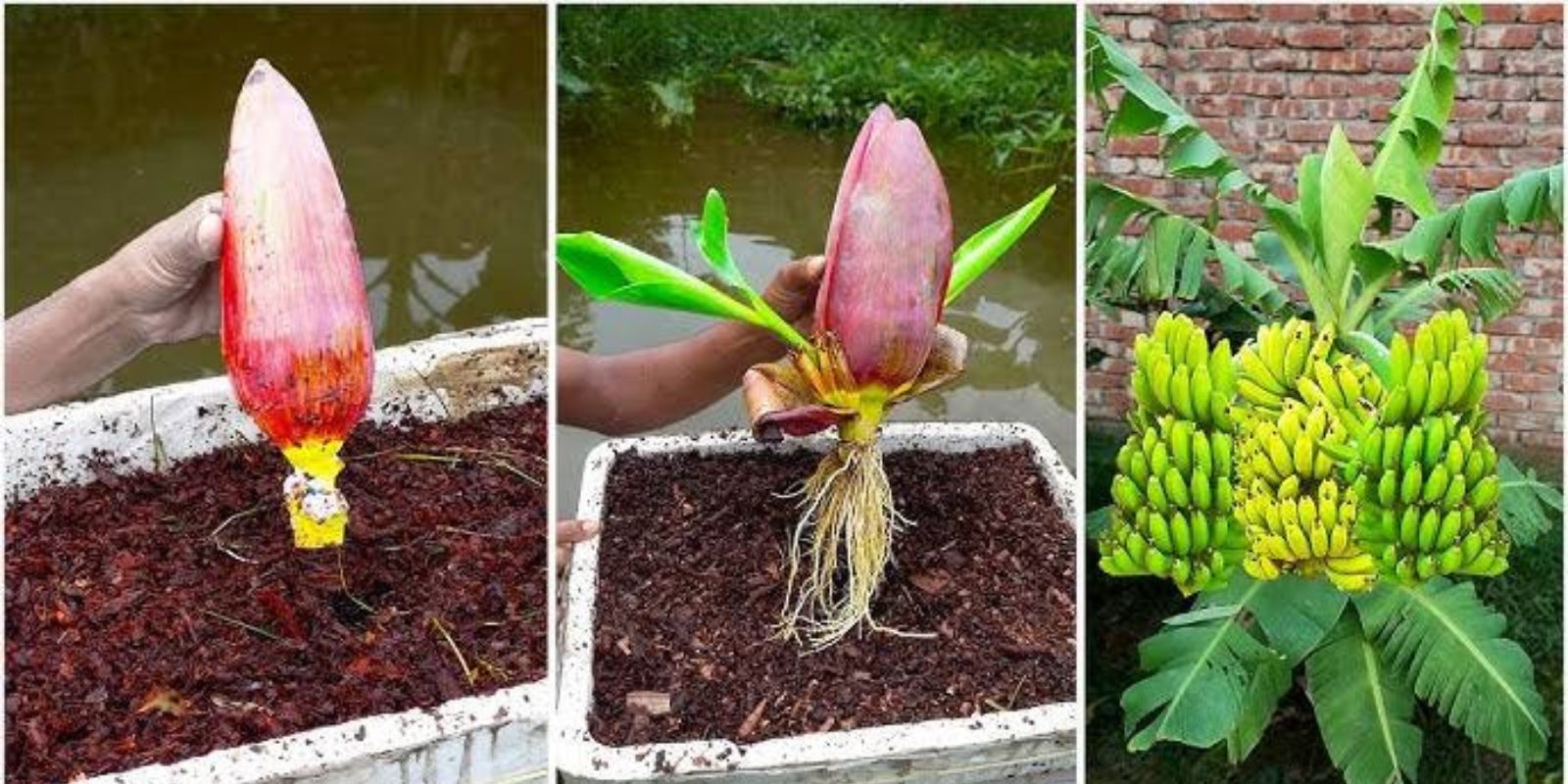Banana trees are not only iconic in tropical landscapes but also valuable for their fruit, shade, and ornamental beauty. Traditionally grown from suckers or seeds, there’s a unique way to cultivate banana trees that many gardeners aren’t aware of—starting from a banana flower. This method is as fascinating as it is effective, and it’s a perfect project for gardeners who love experimenting with nature.
In this article, we’ll explore how to grow a banana tree from a banana flower, the science behind this method, and why it’s worth trying in your garden. Whether you’re a seasoned gardener or a curious beginner, this step-by-step guide will help you achieve a thriving banana tree from a single flower.
Why Grow a Banana Tree from a Banana Flower?
Banana flowers are the foundation of banana fruit development, and they contain the potential to grow into full-fledged banana trees under the right conditions. Cultivating a banana tree from a flower offers several benefits:
- Sustainability: This method uses parts of the plant that might otherwise go to waste.
- Innovation: It’s a creative approach to gardening, perfect for those looking to try something new.
- Accessibility: Banana flowers are often more available than suckers or seeds, making this a practical option.
- Aesthetic Appeal: Watching a flower transform into a tree is a deeply satisfying and educational experience.
The Science Behind the Method
Banana flowers are packed with growth hormones and cells capable of producing roots and shoots. When provided with the right environment—moisture, nutrients, and light—the flower can develop a root system and grow into a full tree. While this method isn’t as widely practiced as traditional propagation techniques, it highlights the remarkable regenerative properties of plants.
How to Grow a Banana Tree from a Banana Flower
Follow these detailed steps to successfully grow your banana tree:
1. Select a Healthy Banana Flower
- Look for a mature, healthy banana flower from a variety known for good growth, such as Cavendish or Musa Basjoo.
- Ensure the flower is free from pests or diseases and has a sturdy stem.
2. Prepare the Banana Flower
- Using a clean, sharp knife, cut the banana flower from the tree, leaving a portion of the stem intact.
- The stem will act as a base for rooting, so ensure the cut is smooth and clean.
3. Root the Flower in Water
- Fill a container with clean water and place the base of the flower in it.
- Change the water every 2-3 days to prevent stagnation and encourage healthy root development.
- Place the container in a well-lit spot with bright, indirect sunlight.
4. Monitor Root Growth
- Roots should begin to appear within 2-4 weeks.
- Once the roots reach 4-6 inches in length, the flower is ready for transplanting.
5. Prepare the Planting Site or Pot
- Choose a location with rich, well-draining soil. If growing in a pot, select one that is at least 18-24 inches deep.
- Mix organic compost into the soil to provide the nutrients needed for strong growth.
6. Transplant the Banana Flower
- Create a small hole in the soil and gently place the rooted flower into it, ensuring the roots are spread out evenly.
- Cover the roots with soil, leaving the top of the flower exposed. Press the soil gently to secure the plant.
7. Water Consistently
- Water the plant immediately after transplanting and keep the soil moist (but not waterlogged) during the establishment period.
- Use mulch to retain moisture and regulate soil temperature.
8. Provide Proper Care
- Sunlight: Banana plants thrive in full sun but can tolerate partial shade. Aim for at least 6-8 hours of sunlight daily.
- Fertilizer: Feed the plant with a balanced fertilizer every 4-6 weeks to encourage healthy growth.
- Pest Control: Protect the plant from common pests like aphids or spider mites by using organic treatments like neem oil.
Common Challenges and Solutions
While growing a banana tree from a flower is an exciting process, it can come with challenges. Here are a few common issues and how to address them:
- Slow Root Growth: Ensure the water is changed frequently and that the flower receives adequate indirect light.
- Wilting After Transplant: This may indicate transplant shock. Water consistently and provide shade until the plant stabilizes.
- Pests or Diseases: Regularly inspect the plant and treat infestations promptly with organic solutions.
Benefits of Growing a Banana Tree This Way
- Eco-Friendly: Using a banana flower to grow a tree reduces waste and promotes sustainability.
- Cost-Effective: This method eliminates the need to purchase seedlings or suckers.
- Personal Satisfaction: Watching the transformation of a flower into a tree is a rewarding experience.
- Educational Opportunity: This is an excellent project for teaching children about plant biology and the wonders of nature.
When Can You Expect Results?
With proper care, your banana tree will begin to establish itself within a few months. It typically takes 9-12 months for banana plants to mature and bear fruit, depending on the variety and growing conditions.
Tips for a Thriving Banana Tree
- Companion Planting: Grow companion plants like marigolds to repel pests and improve soil quality.
- Seasonal Care: Protect the plant from frost in colder months by covering it or moving it indoors.
- Pruning: Remove dead or damaged leaves to encourage healthy growth.
Conclusion
Growing a banana tree from a banana flower is a unique and rewarding gardening method that combines creativity with sustainability. By following the steps outlined in this guide, you can enjoy the beauty and productivity of your very own banana tree. Whether you’re aiming to enhance your garden’s aesthetics, reduce waste, or simply try something new, this project is sure to bring satisfaction.
Have you ever tried growing a banana tree this way? Share your experiences, tips, or questions in the comments below. Let’s grow together! 🌿🍌
#BananaTree #GrowFromFlower #GardeningTips #SustainableGardening #TropicalGardening #PlantLovers #EcoFriendlyGardening #HomeGardenGoals

